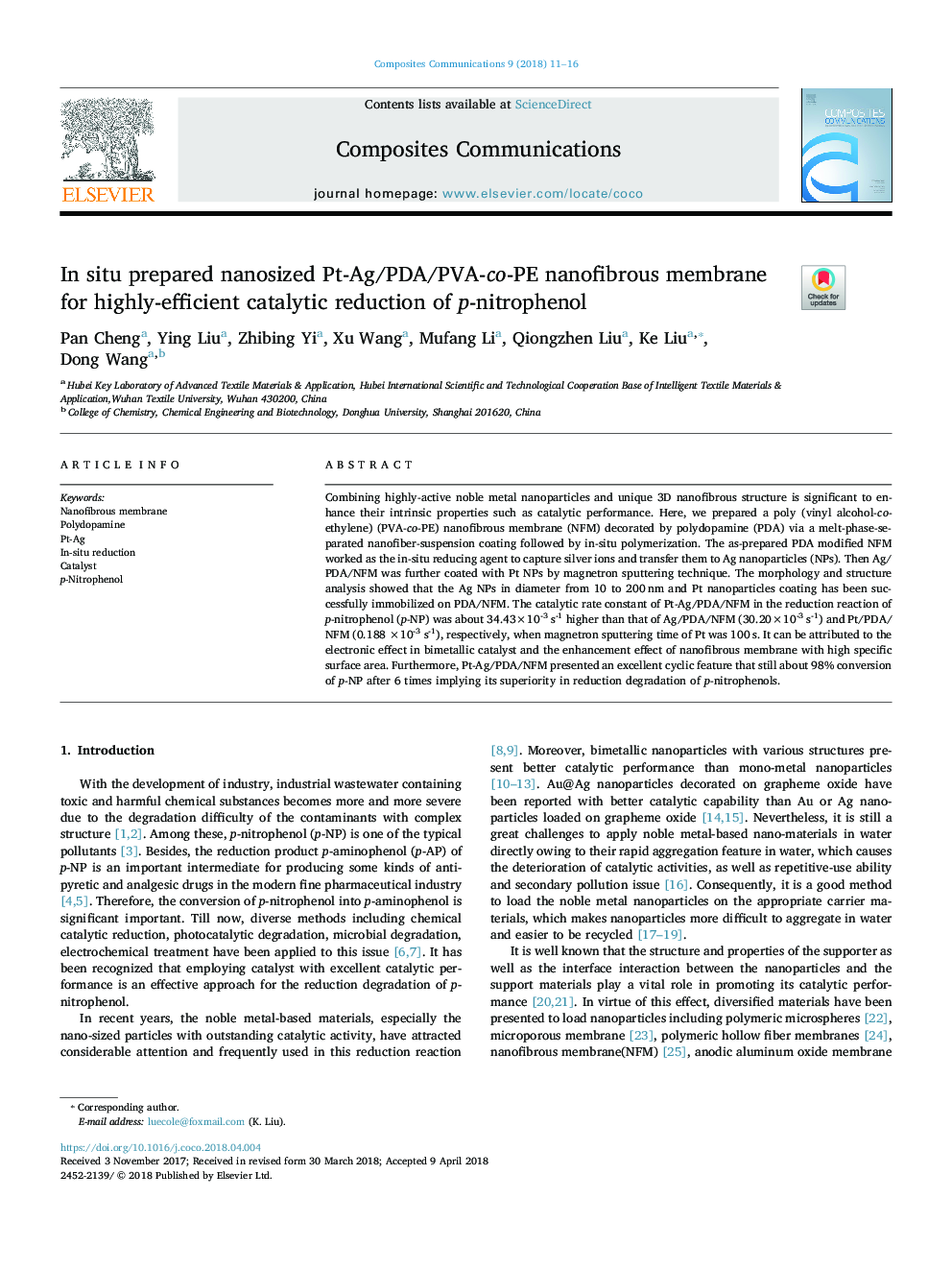| Article ID | Journal | Published Year | Pages | File Type |
|---|---|---|---|---|
| 7857292 | Composites Communications | 2018 | 6 Pages |
Abstract
Combining highly-active noble metal nanoparticles and unique 3D nanofibrous structure is significant to enhance their intrinsic properties such as catalytic performance. Here, we prepared a poly (vinyl alcohol-co-ethylene) (PVA-co-PE) nanofibrous membrane (NFM) decorated by polydopamine (PDA) via a melt-phase-separated nanofiber-suspension coating followed by in-situ polymerization. The as-prepared PDA modified NFM worked as the in-situ reducing agent to capture silver ions and transfer them to Ag nanoparticles (NPs). Then Ag/PDA/NFM was further coated with Pt NPs by magnetron sputtering technique. The morphology and structure analysis showed that the Ag NPs in diameter from 10 to 200â¯nm and Pt nanoparticles coating has been successfully immobilized on PDA/NFM. The catalytic rate constant of Pt-Ag/PDA/NFM in the reduction reaction of p-nitrophenol (p-NP) was about 34.43Ã10-3 s-1 higher than that of Ag/PDA/NFM (30.20Ã10-3 s-1) and Pt/PDA/NFM (0.188 Ã10-3 s-1), respectively, when magnetron sputtering time of Pt was 100â¯s. It can be attributed to the electronic effect in bimetallic catalyst and the enhancement effect of nanofibrous membrane with high specific surface area. Furthermore, Pt-Ag/PDA/NFM presented an excellent cyclic feature that still about 98% conversion of p-NP after 6 times implying its superiority in reduction degradation of p-nitrophenols.
Related Topics
Physical Sciences and Engineering
Materials Science
Biomaterials
Authors
Pan Cheng, Ying Liu, Zhibing Yi, Xu Wang, Mufang Li, Qiongzhen Liu, Ke Liu, Dong Wang,
